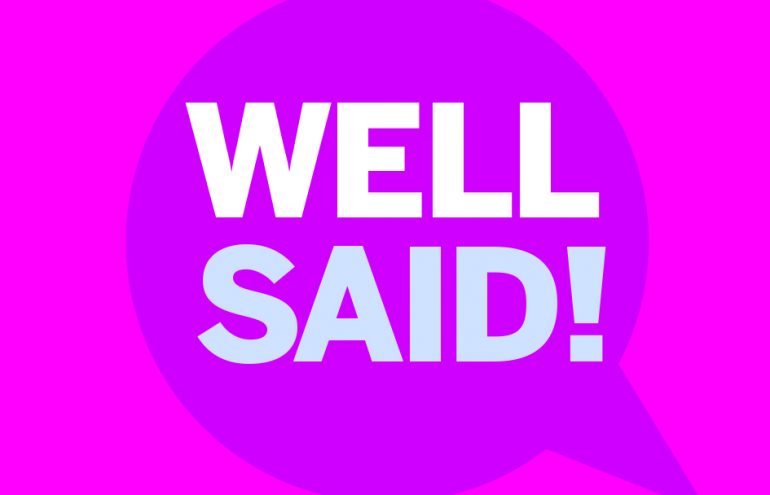The business meet-and-greet scene is fraught with potential pitfalls, even for the most confident among us. Here’s how to reduce embarrassing encounters at networking events, receptions and other occasions.
Do I Know You?
Professional social encounters pose a handful of risks that we can group under the “am I supposed to know this person?” category. It takes a few cringe-worthy forms I’m sure we can all relate to:
- “I think we’ve met, but we haven’t.”
- “I don’t think we’ve met, but we have.”
- “I recognize your face, but I don’t know if we’ve met.”
- “I know we’ve met, but I can’t remember your name.”
- “We bumped into each other earlier at this multiday event, and I can’t remember your name.”
- Another person connects you with someone, and explicitly assumes you both must know each other. You don’t know if that’s true or not, but it could be.
To avoid awkwardness, I play it safe by eliminating the specifics. Whenever I approach someone, I scan their name tag while extending my hand and saying my name: “Hi, Denise. Mike O’Horo. Nice to see you.”
Note that by not saying “nice to meet you,” or “nice to see you again,” I eliminate all risks in the met-previously category.
Sometimes, people will respond with, “I remember you, Mike. We met at [event].”
To which I reply, “You have a good memory. I’m flattered.”
Or they may say, “We met at last night’s cocktail reception.”
My reply: “I’m flattered that you remember, but I’ve learned not to assume that, so I always say my name in case you forgot.”
If I’m making the rounds with a colleague, we make a mutual non-embarrassment pact: “If someone approaches and I don’t know them, I’ll initiate an introduction. If I know them and remember their name, I’ll initiate. If I don’t initiate, that means I should but I can’t because I don’t remember their name. If so, bail me out. Stick your hand out and introduce yourself so I’ll hear them say their name.”
Sometimes, people remember me enthusiastically, and greet me before I can insert my name, but they get my name wrong. “Hey, Mark! Great to see you again. It’s been since the last conference, right?” If there are others present, I don’t correct them. It’s not that important, and there will be an opportunity to do so privately another time. Or, if we get into conversation, another person may say my name, or they may notice my name tag (see below) and correct themselves. Either way, everyone will notice that I’ve been gracious.
If this happens when we’re alone, I’ll correct them with a casual, “Actually, it’s ‘Mike,’” and immediately move on in conversation to avoid any awkwardness.
A riskier situation is encountering someone of higher status, whom you’ve met before and wish to cultivate, but because of their station you realize that there’s a pretty good chance that they don’t remember you. In this case, I give them everything they need to at least act like they remember me:
“Hello, Ms. Johnson. My name is Mike O’Horo. I won’t expect you to remember, but we met briefly a year ago when you spoke at [forum]. I thought you made an important point about [topic].”
This tells them that you did, in fact, meet, and even if they don’t recall it, you’ve given them something to work with. “Oh, yes, Mike. That was quite an event, wasn’t it? Lots of interesting perspectives, as I recall.” Then, you can proceed to what you wanted to speak with them about. (You can also use this with a well-known person you didn’t actually meet previously, but want to now, and have a “content anchor” such as the “made an interesting point” example above.)
These have served me well, allowing me to appear far more socially adept than I may have otherwise felt at those moments.
Name Tags to the Rescue
According to Scientific American, between 70 and 95 percent of humans are right-handed. (I don’t know why the range is so broad.) So it’s only natural to pick up your badge with your right hand, which makes your left lapel the easiest place to attach it. However, handshakes are always right-handed, so for the badge to be easily visible to the person you’re meeting, it must be in the line of sight as they face you. Make sure to put it on your right lapel.

Many conferences have the name tags on lanyards that go around your neck. The default is that they’re at maximum length when you get them. Unless you’re very tall, this puts your name tag out of easy view, and raises the odds that contact with your legs while walking will cause it to spin around and not be readable at all. Shorten the lanyard to raise your name tag to the height it would be if affixed to your lapel.
Now that you can avoid all introduction faux pas, relax and make the event work for you.
YOU MIGHT ALSO LIKE …
Read past “Well Said” columns by Mike O’Horo to polish your sales skills:
- Are You (Gulp) the Boring One?
- Disengage from a Dead-End Networking Conversation
- It’s All About Relationships (Not)
Illustration ©iStockPhoto.com

















